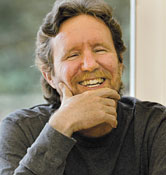 NSS Director Al Globus appeared on the internet radio program The Space Show on July 12, speaking on his latest research on Low Earth Orbit space settlements which can be made at much lower mass than previously thought due to lower radiation requirements and higher rotation rates.
NSS Director Al Globus appeared on the internet radio program The Space Show on July 12, speaking on his latest research on Low Earth Orbit space settlements which can be made at much lower mass than previously thought due to lower radiation requirements and higher rotation rates.
The full program, which runs just under two hours, can be found online here and a more thorough description with commentary can be found here.
Al’s latest papers on the subject are listed below.
- Space Settlement Population Rotation Tolerance (PDF 10MB), Al Globus and Theodore Hall, preprint, June 2015. This paper reviews the literature to find that space settlement residents and visitors can tolerate at least four, and proabaly six, rotations per minute to achieve 1g of artificial gravity. This means settlements can be radically smaller, and thus easier to build, than previously believed. Combined with the next paper on radiation shielding, the first space settlements can be two orders of magnitude less massive and closer to Earth than previous designs, making launch from Earth practical.
- Orbital Space Settlement Radiation Shielding (PDF 2MB), Al Globus and Joe Strout, preprint, May 2015. The major result of this paper is that settlements in low (~500 km) Earth equatorial orbits may not require any radiation shielding at all based on a careful analysis of requirements and extensive simulation of radiation effects. This radically reduces system mass and has profound implications for space settlement, as extraterrestrial mining and manufacturing are no longer on the critical path to the first settlements, although they will be essential in later stages. It also means the first settlements can evolve from space stations, hotels, and retirement communities in relatively small steps.


















